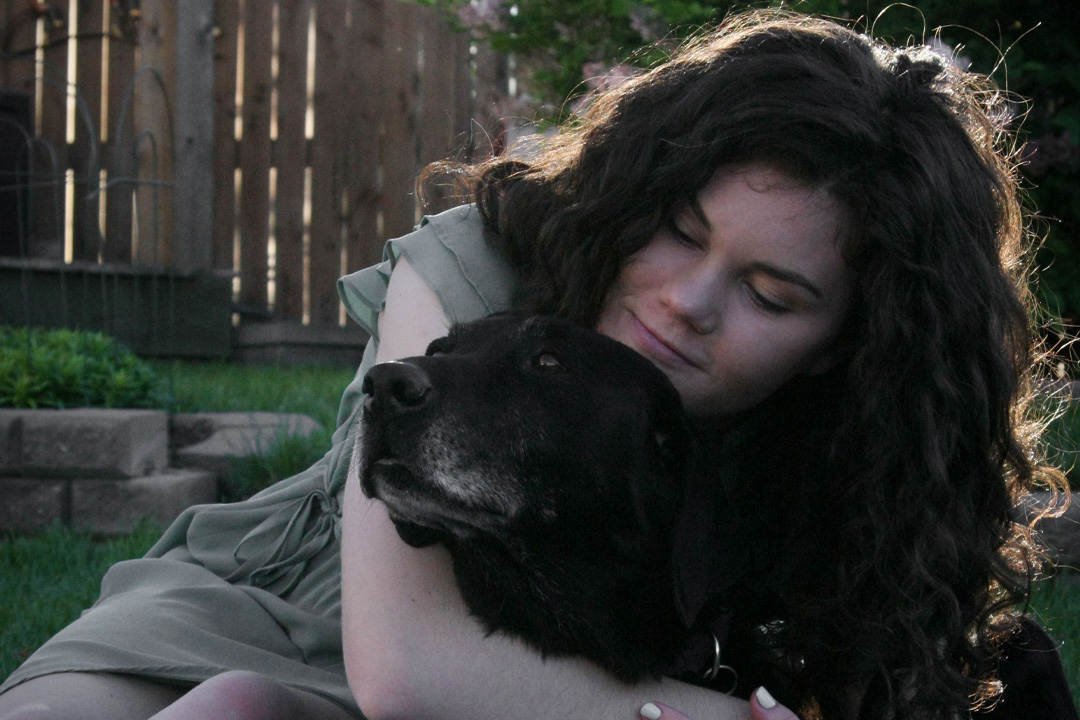
USask research shows therapy dogs can build a stronger social support network in Canada’s prisons
Therapy animals are known for their beneficial effects on humans in health care environments, but what about in prisons? A University of Saskatchewan (USask) graduate student is looking into how animal therapy programs could help individuals who are incarcerated maintain their sense of self and overcome stigma.
By BROOKE KLEIBOERPrevious USask research has established that animal therapy programs can be beneficial to patients’ pain and comfort levels when visiting an emergency room, but Grace Rath was determined to find out if such programs could similarly support individuals currently living in prisons.
Rath began her research career after being inspired by her time as a therapy dog volunteer in 2018 when she was certified with her black Labrador, Jager, with the St. John Ambulance therapy dog program in Saskatchewan. Together, they visited community mental health organizations and assisted-living facilities.
“Jager showed me how impactful interacting with a non-judgmental and loving dog could be with people who needed that extra care,” said Rath.
This experience fueled a desire to dig deep and find out if therapy animal programs would work in prison settings, and if they were successful, why this occurred.
“Most prison animal program research suggests that these programs are beneficial in creating opportunities for building responsibility, emotional regulation, prepping for the workforce, and increased mental well-being,” said Rath, who is pursuing a master’s degree in sociology through the USask College of Arts and Science under the supervision of professor Dr. Colleen Dell (PhD).
Understanding some of the challenges faced by incarcerated individuals is crucial to investigating why therapy animals may aid in increasing well-being. A major obstacle incarcerated individuals have to overcome is facing de-individuation – a sense of feeling stripped of an individual identity within the confines of the prison system.
“Stereotypes targeting their negative social labels as criminals and problematic substance users – including labels such as addicts, failures, aggressive, and tough – took away the individual identities and made them feel that they were just ‘criminals’ within the prison institution,” said Rath.
“I was interested in what the dogs themselves did that was different from typical human interventions, and what processes lead them to develop these meaningful relationships with study participants [in spite of these challenges].”
After analyzing interviews from both prison staff and currently incarcerated individuals about their experiences with the PAWSitive Support Canine Assisted Learning Program in 2016, Rath said she was surprised by some of the findings.
A major finding was that study participants felt the dogs cared for them personally, both by being emotionally and physically present and by displaying unconditional love. But, on another note, participants and staff highlighted the importance of how the prison environment can deprive humans of some important building blocks towards feeling valued in society.
“What was especially surprising within in this research was how the participants and staff described the importance of the emotional and physical care the participants felt from the dogs,” said Rath. “This was something they had not experienced within the prison environment, and for some of them, most of their life. Even just the opportunity to be able to physically touch the dogs, and getting to pet them and hug them, was something they could not experience within their regular environment.”
Rath said she gained an understanding of how a feeling of connection and a sense of support can be integral in providing beneficial prison programing and encouraging substance use recovery.
“It was also surprising how the participants built unique and individual relationships with the dogs based on the dogs’ personalities,” said Rath. “The dogs were able to humanize the participants to the point where they could feel more like themselves and less like their internalized stereotypes.”
Rath plans to publish an academic journal article in the near future highlighting her research findings and hopes to incorporate her research into a handbook for therapy dog handlers. She also presented the results at a conference hosted by the Canadian Sociological Association this past spring.
“This research will have a number of public policy applications and will build social awareness around the harmful impacts of internalized stigma for prisoners, and prisoners who use substances,” said Rath.
Her inspiration for the work will continue through her love of experiences with therapy animals. She continues to volunteer with her dog Reacher, through the St. John Ambulance Therapy Dog program on the USask campus.
The research was supported by the Social Sciences and Humanities Research Council of Canada.
This article first ran as part of the 2023 Young Innovators series, an initiative of the USask Research Profile and Impact office in partnership with the Saskatoon StarPhoenix.

